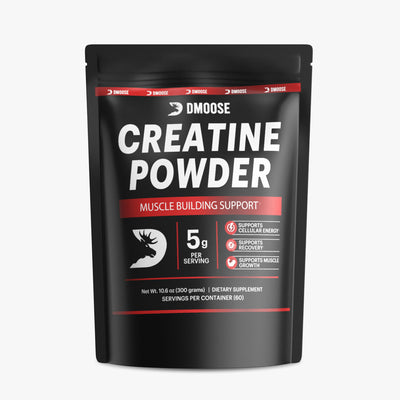There's a lot of talk about how to lose fat and build muscle, but not so much about maintaining muscle while in a calorie deficit. This is an important topic because if you're trying to lose fat, you will most likely be in a calorie deficit. And if you're in a calorie deficit, you need to make sure that you don't lose too much muscle.
When you are on a low-calorie diet, your body will start to break down muscles for energy. This can lead to a decrease in strength and endurance, making it more challenging to lose fat.
To avoid this, eat enough protein and do strength-training exercises. This will help you maintain muscle mass and ensure that your body burns fat, not muscle.
In addition, focus on healthy eating and making lifestyle changes that will help you sustain your weight loss in the long term. You can reach your weight-loss goals while still maintaining muscle mass with these tips.
Tips to Maintain Muscle Mass
Follow the tips mentioned below if you aim to gain muscle mass:
1. Consume a High Level of Proteins

Many people believe that they must eliminate all carbs and fat from their diets to reduce weight. This, on the other hand, is a far cry from reality! Maintaining a high protein intake when dieting is critical to avoiding muscle loss.
Muscle tissue is metabolically active, meaning that it burns more calories at rest than fat tissue. Therefore, by preserving muscle mass, you will boost your metabolism and aid in weight loss.
A high protein diet will also help keep you feeling fuller for longer. This is because protein takes longer to digest than other nutrients, keeping you satisfied between meals.
So, if you're looking to lose weight, make sure to include plenty of protein-rich foods in your diet!
Related Article: 10 Muscle-Building Meals that You Can Eat Before Bed
2. Don't Push the Limits
One of the biggest mistakes people make when trying to lose fat is pushing themselves too hard. They do too much cardio, cut their calories too low, and don't give their bodies enough time to recover. This can lead to muscle loss because your body will start breaking down muscle for energy if it's not getting enough calories from food.
To avoid this, you need to ensure that you're not pushing yourself too hard. Do some moderate cardio, eat a little bit less than you're used to, and give your body time to recover. If you do this, you'll be able to lose fat without losing muscle.
3. Train Less, Rest More

If you're trying to lose fat but maintain muscle, your best bet is to train less and rest more. That may sound counterintuitive, but it's one of the most effective ways to do both.
When you're in a calorie deficit, your body is in a state of catabolism, breaking down carbohydrates and fats for energy. This process also breaks down muscle tissue.
However, during rest and recovery periods, your body is in an anabolic state, meaning it builds and repairs tissue. So, by training less and resting more, you give your body the time it needs to repair and rebuild muscle tissue.
Of course, this doesn't mean you should do nothing but lounge around all day. You still need to exercise to keep your body healthy and your muscles active. Just don't overdo it.
Losing fat takes time and consistency, so don't try to do too much at once. Start by cutting back on your training volume and frequency, and make sure you're getting enough rest and recovery. Once you've lost the desired amount of fat, you can start focusing on building muscle.
Related Article: The Science of Muscle Recovery: How Much Rest Between Workouts for Muscle Growth?
4. Try to Shift to Bodyweight Exercises

If you're trying to lose weight, you might be tempted to cut calories by any means necessary. But if you want to maintain muscle while doing so, it's essential to be strategic about your approach. One effective strategy is to focus on bodyweight exercises.
Bodyweight exercises are a great way to stay active and keep your muscles engaged while cutting calories. They can be done anywhere, making them convenient for busy people. Some great bodyweight exercises include push-ups, pull-ups, squats, and lunges.
When choosing bodyweight exercises, it's crucial to select those that target all major muscle groups. This will help ensure that you're getting a well-rounded workout and keeping your muscles strong.
If you're new to exercise, it's essential to start slow and gradually increase the intensity of your workouts. This will help reduce injury risk and ensure that you can complete the exercises safely.
5. Try New Things

A few things you can do to help ensure that your body is getting the nutrients it needs to stay strong. Trying protein powders or supplements is one approach to ensure you are receiving enough protein. Many plant-based options are available now that can provide your body with the amino acids it needs to build muscle.
People who desire to reduce, increase, or maintain their weight should try DMoose whey protein. Athletes who want to build or maintain muscle mass, improve exercise performance, and recover from their workouts might benefit from this supplement.
Another way to ensure you're getting enough nutrients is to eat various nutrient-dense foods. This involves consuming various fruits, vegetables, and whole grains. By ensuring that you're getting a wide range of nutrients, you'll be giving your body everything it needs to stay healthy and build muscle.
Finally, make sure you're staying hydrated. Drinking plenty of water will help your body flush out toxins and keep your muscles hydrated. This will help you avoid any cramping or pain that can come from dehydration.

You can try DMoose Essential Amino Acids (EAAs) + Hydration, that aids in rehydration and replenishment of lost electrolytes aided by precise amounts of essential electrolytes such as sodium and potassium. By following these tips, you'll be on your way to maintaining muscle mass while in a calorie deficit.
6. Master the Technique
As mentioned above, protein is essential for maintaining muscle mass. The recommended intake for someone trying to lose weight is 0.36-0.73 grams per pound of body weight (0.8-1.6 grams per kilogram).
For example, a 160-pound (72.5kg) person would need 58-116 grams of protein per day. However, it is not just about the amount of protein you consume but also the quality. Animal protein sources, such as meat, poultry, and fish, are generally superior to plant-based proteins in terms of their amino acid composition.
This is important because certain amino acids are needed for muscle growth and maintenance. Animal proteins tend to be richer in these essential amino acids than plant proteins.
So, if you are trying to lose weight and maintain muscle mass, make sure you include plenty of animal protein in your diet.
In addition to protein, you also need to make sure you are getting enough resistance exercise. This is important because it helps stimulate muscle growth.
You should perform resistance exercises three to four times a week at the very least. Pushups and squats are good places to start if you are new to resistance training. Dumbbells and other weightlifting equipment may be used as you become more physically fit.
Additionally, ensure that you have enough rest and sleep; your body repairs and rebuilds muscle tissue when you sleep. So, if you want to maintain muscle mass, make sure you are getting 7-8 hours of sleep per night.
Related Article: Why is Sleep Important for Your Health?
7. Don't Train On Calorie Deficit Beyond 10-12 Months
If you've been training hard on a calorie deficit for more than 10-12 months, your muscle mass must have begun to suffer. This is because when you're in a calorie deficit, your body starts to burn muscle for energy.
To prevent this from happening, make sure to cycle your calories every few months. This means eating at maintenance or even slightly above for a month or two and then getting into a calorie deficit. This will give your body the chance to recover and rebuild muscle mass before it starts breaking it down again.
Summary
As you can see, there are many things to consider when trying to maintain muscle while in a calorie deficit. It's not impossible, but it takes more effort than if you were trying to gain muscle. By consuming a high level of proteins, avoiding over-training, and incorporating bodyweight exercises into your routine, you can make the process much simpler for yourself.
Be sure to mix up your training by trying new exercises and techniques; this will help keep things interesting (and challenging) enough that you won't get bored and give up. Finally, remember that maintaining muscle is a marathon, not a sprint! Don't try to push the limits for too long and burn out.
Reading List
Article Sources
- Benton, David, and Hayley A. Young. “Reducing Calorie Intake May Not Help You Lose Body Weight.” Perspectives on Psychological Science, vol. 12, no. 5, Sept. 2017, pp. 703–14. PubMed Central, https://doi.org/10.1177/1745691617690878.
- Boston, 677 Huntington Avenue and Ma 02115 +1495‑1000. “Protein.” The Nutrition Source, 18 Sept. 2012, https://www.hsph.harvard.edu/nutritionsource/what-should-you-eat/protein/.
- Krzysztofik, Michal, et al. “Maximizing Muscle Hypertrophy: A Systematic Review of Advanced Resistance Training Techniques and Methods.” International Journal of Environmental Research and Public Health, vol. 16, no. 24, Dec. 2019, p. 4897. PubMed Central, https://doi.org/10.3390/ijerph16244897.
- McPherron, Alexandra C., et al. “Increasing Muscle Mass to Improve Metabolism.” Adipocyte, vol. 2, no. 2, Apr. 2013, pp. 92–98. PubMed Central, https://doi.org/10.4161/adip.22500.
- O’Keefe, James H., et al. “Potential Adverse Cardiovascular Effects From Excessive Endurance Exercise.” Mayo Clinic Proceedings, vol. 87, no. 6, June 2012, pp. 587–95. PubMed Central, https://doi.org/10.1016/j.mayocp.2012.04.005.
- Paddon-Jones, Douglas, et al. “Protein, Weight Management, and Satiety.” The American Journal of Clinical Nutrition, vol. 87, no. 5, May 2008, pp. 1558S-1561S. PubMed, https://doi.org/10.1093/ajcn/87.5.1558S.
- “Protein, Weight Management, and Satiety.” The American Journal of Clinical Nutrition, vol. 87, no. 5, May 2008, pp. 1558S-1561S. PubMed, https://doi.org/10.1093/ajcn/87.5.1558S.
- Rest Days: Why They Are Important, Benefits, and When to Take One. 28 Jan. 2021, https://www.medicalnewstoday.com/articles/rest-day.
- Schoenfeld, Brad Jon, and Alan Albert Aragon. “How Much Protein Can the Body Use in a Single Meal for Muscle-Building? Implications for Daily Protein Distribution.” Journal of the International Society of Sports Nutrition, vol. 15, Feb. 2018, p. 10. PubMed Central, https://doi.org/10.1186/s12970-018-0215-1.

















